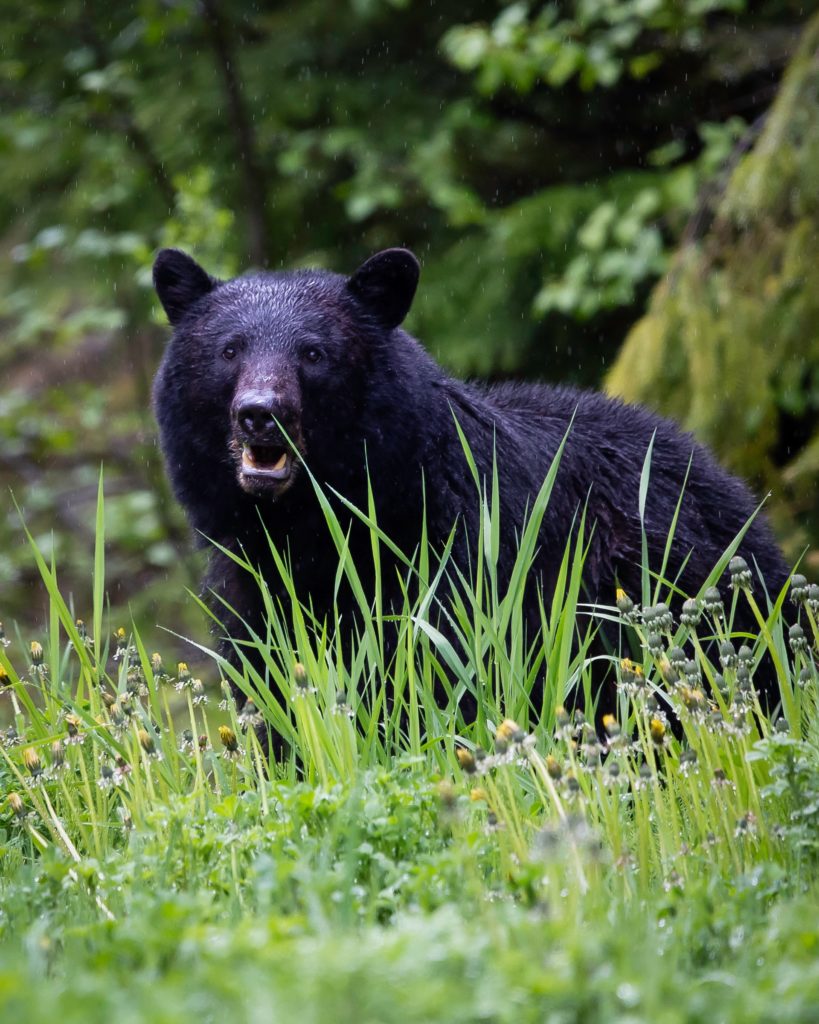Originally posted by Wingfoot on Saturday, August 2, 3:36 PM

Black bears (Ursus americanus) are the largest mammal you will see on the Appalachian Trail. Omnivirous in diet, these bears feed on animals ranging in size from insects to large mammals, as well as on plant material, carrion, and garbage. In autumn these bears gain weight and retreat into dens under fallen trees, in caves, or in other protected areas. There they sleep for several months, living off stored fat. Black bears are not true hibernators; their body temperature does not dropt drastically, and occasionally they wake up and wander away from their dens. Cubs are born about the end of January, while the sows (females) are still in their dens. Bears produce exceptionally small offspring relative to adult size; a black bear weighs about a half pound at birth, but a mature sow averages 300 pounds.
Size: head and body length, 4-5 feet; shoulder height 2-3 feet; males larger than females.
What to look for: fur varying from cinnamon to jet black; brown snout; no shoulder hump; small white breast spot often present.
Range on Trail: Georgia to Maine. Black bears inhabit all of the forests regions along the Trail. Sizeable populations are contained in the two national parks through which the Trail passes. It is estimated that the Great Smoky Mountains National Park now has a bear population of 1800, and Shenandoah National Park now has about 800 animals. It is estimated that there are about 40,000 black bears in eastern North America, with about 25,000 of this total being found in Maine. The fewest number of bears are found in the northern states from New York to Massachusetts.
Encounters on Trail: You can encounter a black bear anywhere on the A.T. from Georgia to Maine, but most people don’t. The most probable places you will see a bear are the two national parks, but sightings are on the increase. Areas that have had many sightings in recent years include the Wawayanda Shelter area in New Jersey, and the White Mountains of New Hampshire. In the history of A.T. hiking, no one has been killed or seriously injured by a black bear, but they are wild animals and common-sense precautions should be practiced, such as sleeping away from food or other scents that will attract bears to your sleeping area.
Suggested websites …
American Black Bear … basic information about appearance, size, habitat, etc.
North American Bear Center … all bears; education, research, and rehabilitation
Bears.org … organization dedicated to preservation of accurate bear beliefs!
Black Bears – Nova On-line … basic information about hibernation
Suggested reading …
Black Bears (Our Wild World Series)
Walking with Bears: One Man’s Relationship with Three Generations of Wild Bears
Beauty Within the Beast: Kinship With Bears in the Alaska Wilderness
